How to go blue and green at the same time
April 15, 2010
The Dodgers’ home stand is continuing through the weekend and fans who want to leave the driving—and parking–to someone else can travel via Dodger Stadium Express bus service from Union Station. Opening Day boasted about 2,900 boardings on the clean energy buses. And yes, you can leave at the 7th inning stretch if you must. Here’s how it all works.
Antelope Valley flower power
April 14, 2010
This past Saturday was one of those rare days when I had absolutely nothing on my schedule. Barbara and I woke up and saw a beautiful photo in the Los Angeles Times of the poppies near Lancaster. She’s always eager to explore Los Angeles and Southern California, but we never seem to be able to string together enough hours for an excursion. So this was our moment.
In my lifetime, I’ve traveled to dozens of countries and 46 of our 50 states. But one of the most spectacular sights I’ve ever seen came at the end our 1½-hour drive from our Fairfax area home to the Antelope Valley California Poppy Reserve, where the state’s flower is in glorious full bloom. So many bright golden orange poppies carpet the hillsides that the explosion of color can be seen from miles away.
It is literally a sight to behold—and photograph. (I’ve attached a few of my own pictures).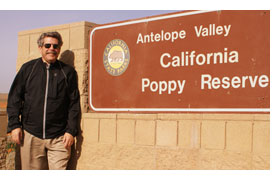
This year, the blooms are particularly spectacular because of our wet winter. Although the flowers grow wild through high-desert area, Barbara and I headed for the state reserve ($8 per car), where there’s a visitors center, picnic tables and eight miles of trails that let you wander through gentle hills. One drawback: the state parks ranger warned us to watch out for snakes, which is not what I wanted to hear.
The views from the reserve’s trails are remarkable. Close-ups of the poppies are matched by unobstructed vistas of thousands of acres covered by different hues of golden orange. The hike leaves you breathless, not because of the physical rigors but because of the unique beauty of the landscape.
My blog usually focuses on pressing public policy issues such as transit, budgets, health and the economy. Today, however, I wanted to share this memorable experience, one that showed me how even I, a native Angeleno, can be taken by surprise. The poppies should be peaking for several more weeks, so if you’ve got a few free hours I strongly encourage you to get in the car and go. You won’t regret—or forget—it.
Here are the directions: Take State Highway 14 to Lancaster. Exit on Avenue I and go west 14 miles. Follow the signs to the Antelope Valley California Poppy Reserve. From there, let your eyes take you the rest of the way.
Enjoy, and feel free to upload your pictures on my website’s “Picture This” feature.
Posted 4/12/2010
Patriot with a No. 5 paintbrush
April 14, 2010
Kent Twitchell casts a huge shadow in the Los Angeles public art world—literally.
For decades, his multi-story portraits of artists, movie stars and musicians have helped define a quintessentially L.A. cityscape as big as all outdoors.
Now he’s headed someplace new—indoors—with a task ahead of him that looms as large as ever: bringing back to life the essence of murals that vanished decades ago in the Bob Hope Patriotic Hall.
The scenes, created by Chicago-born artist Helen Lundeberg, mysteriously disappeared sometime in the ‘70s—stripped off the walls and destroyed or spirited away to points unknown.
Now the landmark 1926 building, once the county’s Hall of Records, is getting a $45.4 million renovation. As part of the project, Twitchell has come onboard to recreate and reimagine the three murals that once dominated the lobby of the building, now home to the county’s Department of Military and Veterans Affairs. 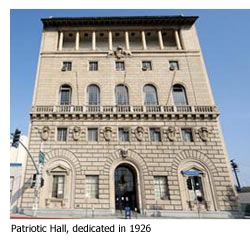
In an interview this week at his downtown studio, Twitchell discussed for the first time how he plans to approach the job. He says he intends to respect the vision Lundeberg created in 1942, while drawing on his own unique sense of aesthetics, with influences ranging from Mt. Rushmore and the Statue of Liberty to Norman Rockwell and the famous faces of Hollywood’s Golden Age.
“I happen to be a patriot,” he says. “Here’s a chance for me to be doing something I really believe in.”
Twitchell, who enlisted in the military right out of high school and went on to become an Air Force illustrator stationed in London, has an idea about the people he’ll depict in his Patriotic Hall scenes. He proposes making every figure in the murals a veteran—from character actor William Sanderson (“Newhart,” “Deadwood,” “True Blood”) to Twitchell’s octogenarian Uncle Paul. He’s also poring over WWII-era books of Hollywood luminaries to discover which ones might qualify for a cameo appearance in one of the murals. “Clark Gable flew suicide missions as a fighter pilot,” he says.
Twitchell muses about the juxtaposition of faces he envisions for the murals—“a superstar, a character actor, someone you don’t know.”
“I want to make it uniquely Los Angeles,” he says. “These are our people. That is Los Angeles.”
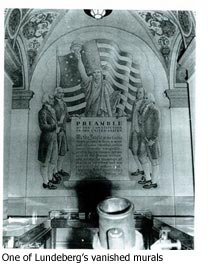 Patriotic Hall, seen by millions zipping through the intersection of the 110 and 10 freeways, is set to reopen in mid-2012. It seems particularly well-suited for a Twitchell project—and not just because it’s located just a short stroll from the artist’s current studio.
Patriotic Hall, seen by millions zipping through the intersection of the 110 and 10 freeways, is set to reopen in mid-2012. It seems particularly well-suited for a Twitchell project—and not just because it’s located just a short stroll from the artist’s current studio.
Like one of Twitchell’s outsize portraits, the building “becomes part of your L.A. urban landscape psyche,” says Letitia Ivins of the county’s Civic Art program, who is serving as project manager for the Patriots Hall work.
She said the committee that selected Twitchell from a field of about 30 other applicants was moved by his track record, personality and obvious passion for the project.
“His sincerity simply won over the committee,” she says. “He is in love with this project and wants to leave a legacy not only for his heirs but also for Los Angeles.”
His final proposal for the $285,000 mural project is still under wraps until the contract is signed, but Twitchell says he expects to follow the original composition of Lundeberg’s works, “Preamble to the Constitution,” “Free Assembly” and “Free Ballot.” Each of the approximately 20-feet-by-12-feet murals—viewable now only in old photos—was hand painted in oils, with funding from the Depression-era Works Progress Administration, which was winding down after the country’s entry into World War II.
“When I found these things online, I thought: why should I do something different?” Twitchell says. “Especially when her work was so unceremoniously and capriciously taken away.”
And that’s something Twitchell can relate to.
A number of his own works have been obliterated over the years, including the six-story high “Ed Ruscha Monument,” which was painted over by work crews in 2006. A $1.1 million settlement—partly paid by the federal government, which owned the building on Hill Street—was hailed as a victory for artists’ rights.
Twitchell describes himself as a reluctant litigant.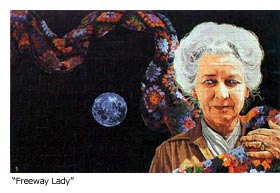
“It was almost like if I didn’t, public art would have taken a hit,” he says. “I was put in a corner. I had to fight.”
Gone, too, is “Freeway Lady,” the grandmother draped with a colorful afghan, though Twitchell plans to repaint and install her on the campus of L.A. Valley College after the Patriotic Hall work is completed. He’s also finishing up a painting of John F. Kennedy for an upcoming show at the Vincent Price Gallery at East L.A. College, where Twitchell was a student, along with Cal State L.A. and what is now the Otis College of Art and Design. The JFK portrait is an offshoot of a Berlin Wall installation that Twitchell created for the Wende Museum of the Cold War.
“I love public art, and have ever since the hippie days in London,” says Twitchell, 67. “L.A. just seemed like the perfect place for it in the ‘60s.”
Twitchell’s Flickr photostream provides a vivid look at his work, past and present. (Amazingly, given the scale of his pieces, his tool of choice for applying acrylic emulsion is generally a No. 5 or No. 6 watercolor brush.)
Twitchell, who moved to L.A. in 1966 after a stopover in Atlanta following his London tour of duty, currently lives in Hollywood. He bemoans the incivility of modern-day street life in the city, and doubts he could have created the same body of work if he was starting out today. City restrictions on building signage are an understandable response to visual pollution, he says—“L.A.’s starting to look like ‘Blade Runner,’ ”—but they also make large scale outdoor art a virtual impossibility.
Then there are the taggers—gang-affiliated and wannabes—who routinely disfigure public artwork.
“Doing things outside is enemy territory now,” he says. “It’s foolhardy.”
He laments “the destruction of so many pieces that I put my heart and soul in,” and says: “What they’re doing is by definition barbaric. It takes months to create and minutes to destroy.”
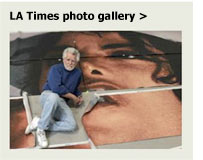 Working indoors on the Patriotic Hall project will provide a lasting refuge for his art. He said he has shied away from government commissions in the past—“I’ve always refused to compete with other artists”—but decided that this one was worth going for.
Working indoors on the Patriotic Hall project will provide a lasting refuge for his art. He said he has shied away from government commissions in the past—“I’ve always refused to compete with other artists”—but decided that this one was worth going for.
“It just seemed like this was a chance,” he says, “to do a very, very unique piece.”
Board to debate gathering, sharing child-abuse data
April 8, 2010
The Board of Supervisors on Tuesday is scheduled to take up the thorny question of how to beef up county efforts to gather and share among key front-line departments relevant information concerning children at risk of abuse or neglect.
Child welfare experts agree that collating and utilizing such information from health, law enforcement and social service agencies about troubled families and at-risk children helps ensure that social workers and courts make the best decisions about a child’s placement, whether it’s with parents or other relative guardians, in foster care, or through permanent adoption.
What they do not always agree on is the best design for such a system. Critics have argued that technological shortcomings and legal constraints regarding privacy and confidentiality have hindered effective deployment of comprehensive information-sharing networks. Others point to inadequate implementation by participating agencies.
Since 1993, federal funds have subsidized development of statewide automated child welfare information systems (SACWIS) around the country. Los Angeles County at that time also adopted a model known as the Family Child Index (FCI), a separate database that depends on public agencies to enter key information such as criminal records, abuse complaints, substance-abuse referrals, doctors’ visits, mental health treatment and public-assistance status. Social workers accessing a child’s/parent’s case files should see “pointers” directing them to relevant reports in various departments. A special Multi-Disciplinary Team, meanwhile, is responsible for ensuring that social workers appropriately access and utilize the system.
Despite being in place, FCI was for years underutilized because key county departments were not entering data regularly. Last year, the Board of Supervisors ordered departments to retrain personnel to boost FCI participation. That training was completed in January. Since then, FCI is being used more often, according to the county’s Chief Executive Office.
A recent CEO analysis suggested exploring alternative models, such as an “information-portal” system currently being developed and refined in New York City. Such portal systems would function like search engines, scouring department databases and creating customized viewable reports containing the relevant data. Critics, however, have raised questions about design, implementation and potentially prohibitive costs.
Scheduled for discussion Tuesday is a motion by Supervisor Mark Ridley-Thomas instructing the CEO and other county departments to explore the feasibility of establishing a new “interagency information sharing system” for child protection. The motion specifically asks that an examination be undertaken of legal requirements and funding issues. If passed, the motion would require the CEO’s office to report monthly progress to the supervisors.
Either way—working to improve the existing FCI through incremental changes or considering its replacement with a new model—the effort will need changes in state law and compliance with federal law to maintain the county’s eligibility for congressional funding.
Posted 4/8/2010
These streets weren’t made for truckin’
April 8, 2010
First came the rains. Then came the trucks, hundreds of them suddenly rumbling through a sleepy Sylmar neighborhood.
They arrived at a staggering clip of 250 an hour, hauling tons of dirt that had cascaded down hillsides scorched by the Station Fire and into rapidly filling debris basins. Bumper to bumper, the trucks inched through the residential streets and up a private road to an obscure L.A. County “sediment disposal site.”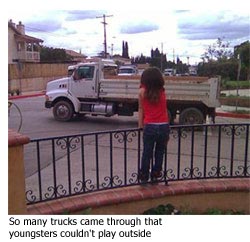
Then they headed back 20 miles across town for more loads—day after day, week after week, from 7 a.m. to 7 p.m.
The goal was to make sure no lives or homes were lost to mudslides that could result from overflowing debris basins in La Crescenta and La Canada Flintridge, the communities most impacted by last year’s blaze. But the problem was that residents of the Sylmar neighborhood were blindsided by the dump truck gridlock that hit their streets after the downpours of early February.
“All of a sudden there was a non-stop procession of dump trucks,” said Gigi Lewis, a 10-year resident of the neighborhood, near the 210 Freeway and Roxford Street. “We were literally imprisoned in our homes. We couldn’t let the kids ride bikes in the street or take our dogs for walks. I was in shock.”
Only in recent weeks have the window-rattling, teeth-gnashing convoys eased back. On Wednesday, for example, just 90 trucks were cycling between the sediment site and areas near the Station Fire’s enormous burn area.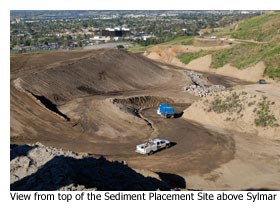
And more relief is on the way, thanks to a plan created by Supervisor Zev Yaroslavsky’s office and the Department of Public Works, which orchestrates the massive movement of earth from the county’s debris basins to its sediment sites (landfills, of sorts, for dirt).
This week, work began on a dirt road that will wind through vacant land mostly owned by the county and which skirts the small residential neighborhood. In a matter of days, all truck traffic will be routed along the new road, meaning peace (and quiet) is at hand for the community’s highly annoyed residents, many of whom say they were unaware that one of the county’s 25 active sediment placement sites was even on the hill above their streets.
Lewis, one of the highly annoyed, had a single word to describe the latest development: “Fabulous!”
The road’s completion also won’t come a day too soon for Paul Melillo, construction superintendent for the public works department. As the man responsible for the Sylmar site, he’s had an earful from residents. “They all know me,” he said with a hint of exasperation.
Melillo said he certainly empathizes with the homeowners who’ve endured weeks of noise, fumes and inconvenience. “I’d be upset, too,” he said. A 35-year veteran of public works, Melillo said he’s done his best to be visible to residents and responsive to their frustrations, while grappling with the fluidity and urgency of the operation.
“I tried to help in any way I could,” he said, “short of pulling the trucks off the street.”
Melillo recalled, for example, a woman who justifiably complained that she couldn’t get out of her garage in the morning because lines of trucks were always blocking her driveway. So, between 7 a.m. and 9 a.m., he positioned a worker near her house to cut a traffic break for her. “She was very appreciative,” Melillo said.
Public works department officials do acknowledge that they could have done a better job of letting the community know upfront what was headed their way—and why.
“The biggest lesson we learned was that we needed more effective communication with the residents,” said Bob Spencer, the department’s chief of public affairs. “This was a new situation for us. We were dealing with the worst fire in the county’s history.”
Spencer said the department was most focused on exploiting lulls between the storms to get debris basins in the burn areas quickly cleaned before more muck flowed into them. “In some instances, that had us working 24/7, with a fleet of more than 300 dump trucks. We recognized the pressure we were putting on the neighborhood but we needed to clean those basins to keep other lives and neighborhoods safe.”
Although the storm season has passed for now, the dangers—and the trucks—will likely be back for the next five years, according to Spencer. Each winter, debris will continue moving down the mountain into the basins until enough vegetation grows to help hold the soil in place.
Said Spencer: “We are definitely going to go through this exercise again.”
For Frequently Asked Questions (FAQs) about L.A. County sediment management, click here.
See what it was like at the traffic’s peak in February. Video Courtesy Gigi Lewis.
Posted 4-08-10
LAUSD Suspends Student Transfer Ban, For Now
April 8, 2010
It won’t happen next year.
Superintendent Ramon Cortines announced on Tuesday that the Los Angeles Unified School District wouldn’t eliminate permits that allow LAUSD students to attend schools in outlying districts for the 2010-11 school year.
Instead, families who live within LAUSD’s boundaries but have inter-district transfer permits to opt into school systems such as Santa Monica-Malibu, Culver City or Beverly Hills can continue their educations in their public-school districts of choice for at least another year.
When the proposal surfaced in March, parents complained that students would have to say goodbye to classmates they’d had for years. The move would have forced students to abandon longstanding involvements with sports teams and extracurricular clubs, too. Echoing the complaints, the Board of Supervisors unanimously adopted Supervisor Zev Yaroslavsky’s motion on March 30 asking Cortines and the LAUSD to reconsider the plan.
Cortines said he will continue to study the issue and will formulate a new policy in the future. Certainly the underlying financial problem of the permits remains unsolved. Because state school funding follows the student, LAUSD stands to lose the $51 million that flows out with the roughly 12,200 students enrolled in 99 other Southland school districts under the permit system.
And while Cortines must contend with LAUSD’s projected $640 million shortfall, the neighboring school districts have come to rely on the additional money the LAUSD students bring, which in some cases constitutes as much as 20% or more of their school funding.
Posted 4/7/2010
Take a hike to mountain science fest
April 7, 2010
Bet you didn’t know that April 17-25 is National Park Week.
What better time to explore the natural wonders of our incredible national parklands and open space in the Santa Monica Mountains?
And here’s an added incentive: The weekend of April 17-18 features the 1st Annual Santa Monica Mountains Science Festival at Paramount Ranch in Agoura Hills, sponsored by the National Park Service in partnership with the Natural History Museum of Los Angeles County. Activities and fun for all ages – Friday night, gather round a campfire to hear tales of owls, bats and bobcats. Saturday, see a live animal show and learn about fossils, stone carving and more. For further information, call the National Park Service at (805) 370-2301. And be sure to visit lamountains.com for a full calendar of year-round events in the Santa Monica Mountains.
Arts bargains bloom for culture lovers
April 7, 2010
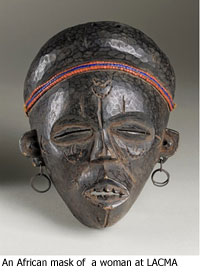 “April,” the poet wrote, “is the cruelest month.” Not in Los Angeles County, where April will be especially kind to arts aficionados of all types. Through April 30, many of our region’s best arts venues, including museums, attractions and performing arts troupes, are giving culture vultures a chance to swoop in and grab admission tickets at discounts of up to 50 percent. Who wouldn’t want a 2-for-1 deal on the Los Angeles Chamber Orchestra concerts, LACMA, or the Los Angeles Conservancy’s walking tours, just to name a few? Not to mention discounts at the shops of museums with free admissions. Check out Discover the Arts in LA here for some tasty offers, and peruse the Official Cultural Calendar of Los Angeles County to start planning your outings.
“April,” the poet wrote, “is the cruelest month.” Not in Los Angeles County, where April will be especially kind to arts aficionados of all types. Through April 30, many of our region’s best arts venues, including museums, attractions and performing arts troupes, are giving culture vultures a chance to swoop in and grab admission tickets at discounts of up to 50 percent. Who wouldn’t want a 2-for-1 deal on the Los Angeles Chamber Orchestra concerts, LACMA, or the Los Angeles Conservancy’s walking tours, just to name a few? Not to mention discounts at the shops of museums with free admissions. Check out Discover the Arts in LA here for some tasty offers, and peruse the Official Cultural Calendar of Los Angeles County to start planning your outings.
New summer jobs for low-income youth
April 6, 2010
The Board of Supervisors on Tuesday voted to expand the county’s longstanding summer jobs program for young people, tapping federal stimulus dollars to create new opportunities for youths in a variety of low-income settings.
With the board’s action, county officials in the Departments of Public Social Services and Community and Senior Services will gain access to $11.7 million in new American Recovery and Reinvestment Act monies. That infusion is expected to boost the county’s Summer Youth Employment Program by as many as 15,000 new jobs.
The expansion—proposed in a motion by Supervisors Don Knabe and Zev Yaroslavsky—will target foster youth in low-income households, young adults aging out of the foster-care system, teens in CalWORKS households, teens on food stamps and emancipated foster youth aged 18-24 who are living in qualifying low-income households.
The summer jobs program is administered through the county’s Workforce Investment Boards, which are funded by the federal government. Information on WIB youth programs can be found here. And click here for a tentative list of ARRA summer youth employers in Los Angeles County.
4/6/2010





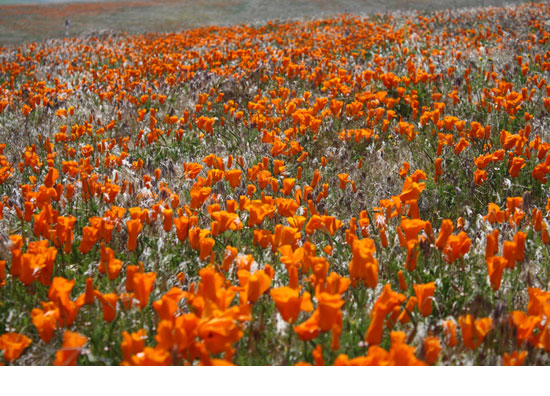






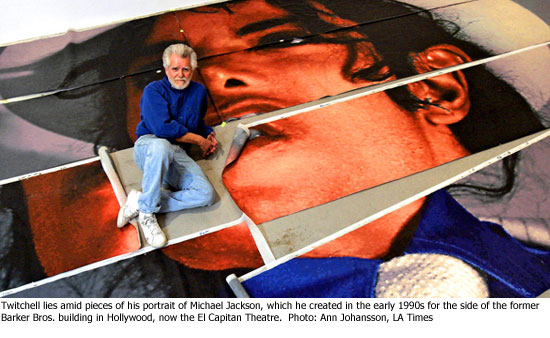
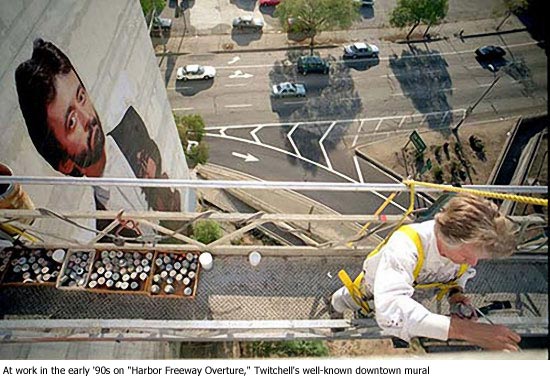
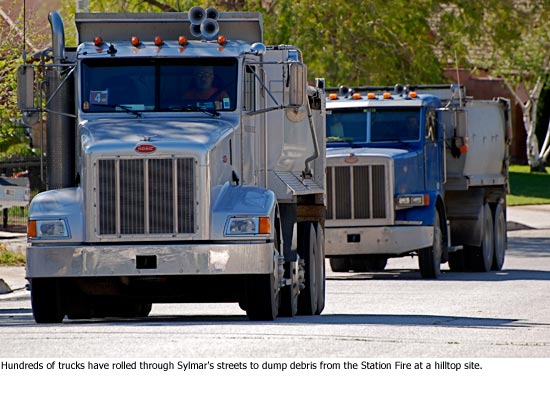
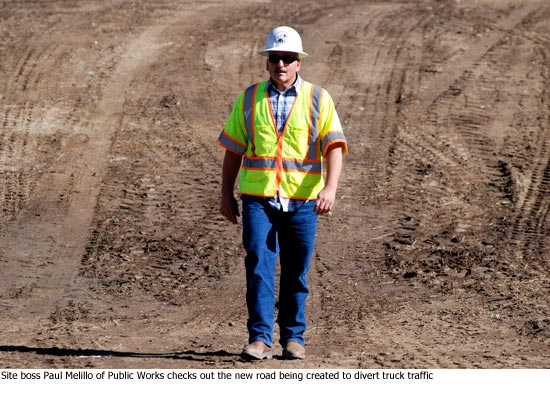
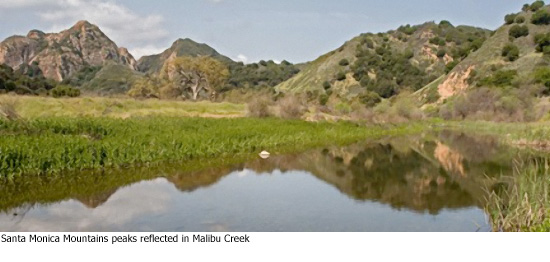





 Check for the latest closure information
Check for the latest closure information








